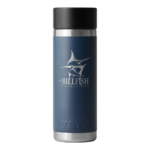
In March of this year, the 1st Circle Hook Workshop of the Inter-American Tropical Tuna Commission (IATTC) commenced. The goal was to analyze “scientific information regarding different circle hooks sizes and their effectiveness at mitigating bycatch and target species with the specific goal of defining the characteristics of an adequate hook for the purpose of mitigating bycatch of sea turtles in accordance with Resolution C-19-04.”
In other words, which hook type and size is the most effective at reducing the catch of unwanted species for pelagic longline.
Various experts were invited to present their findings on the impacts of circle hooks on different taxa. Presentations were given on the effects on seabirds, sharks, sea turtles, and rays.
With regard to sharks specifically, it was assumed circle hooks created a higher probability of post-release survival, stating, “inconclusive findings regarding differences in catch rates on circle hooks, yet reported higher at haul-back survival and reduced injuries on sharks caught on circle hooks, presuming higher probability of post-release survival on circle hooks.”
For more information on the effects of elasmobranchs, click here for the presentation of Bryan Keller Ph. D., NOAA Foreign Special Affairs.
An article shared by TBF back in 2019 re-emphasized this IATTC requirement.








